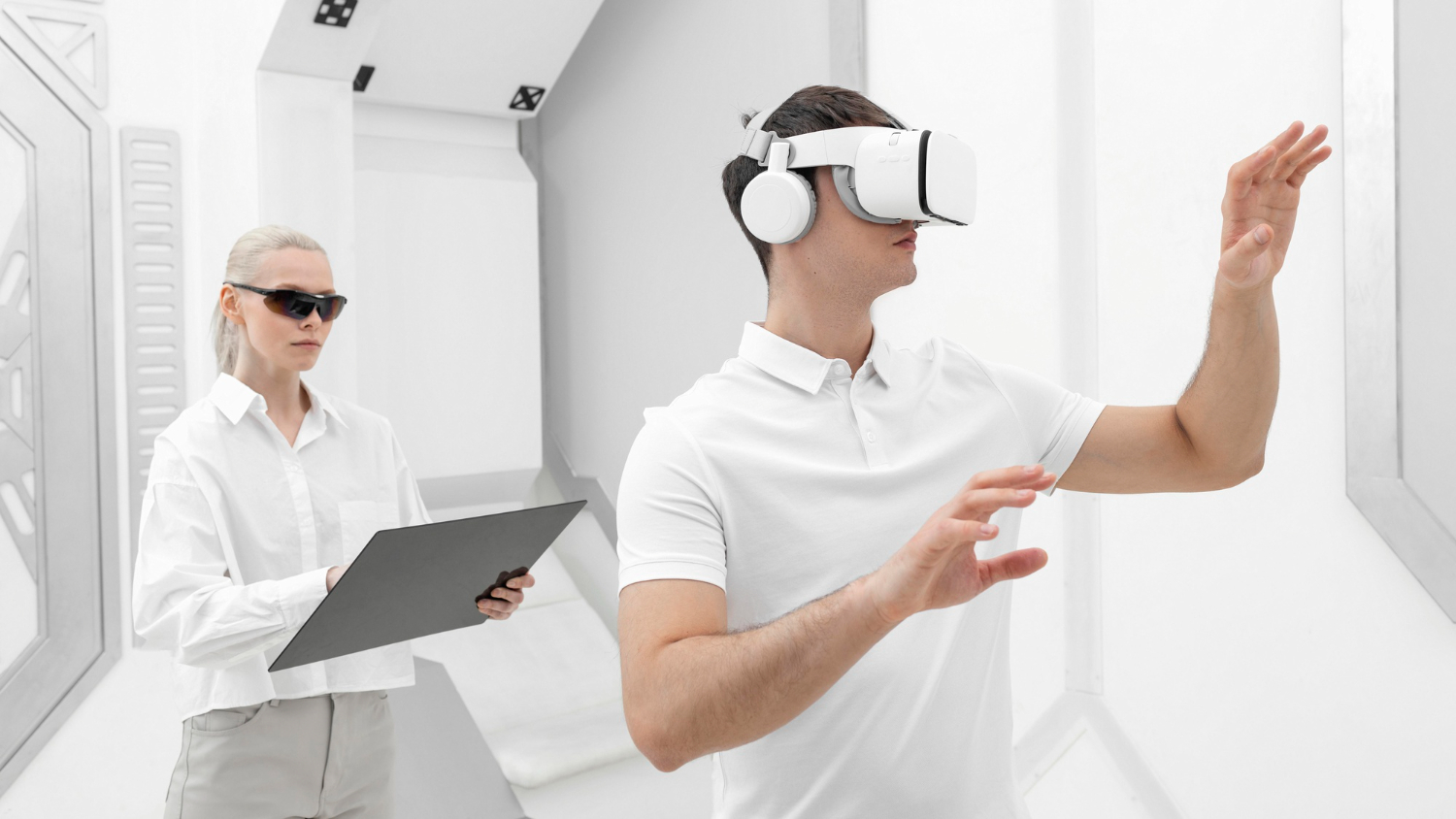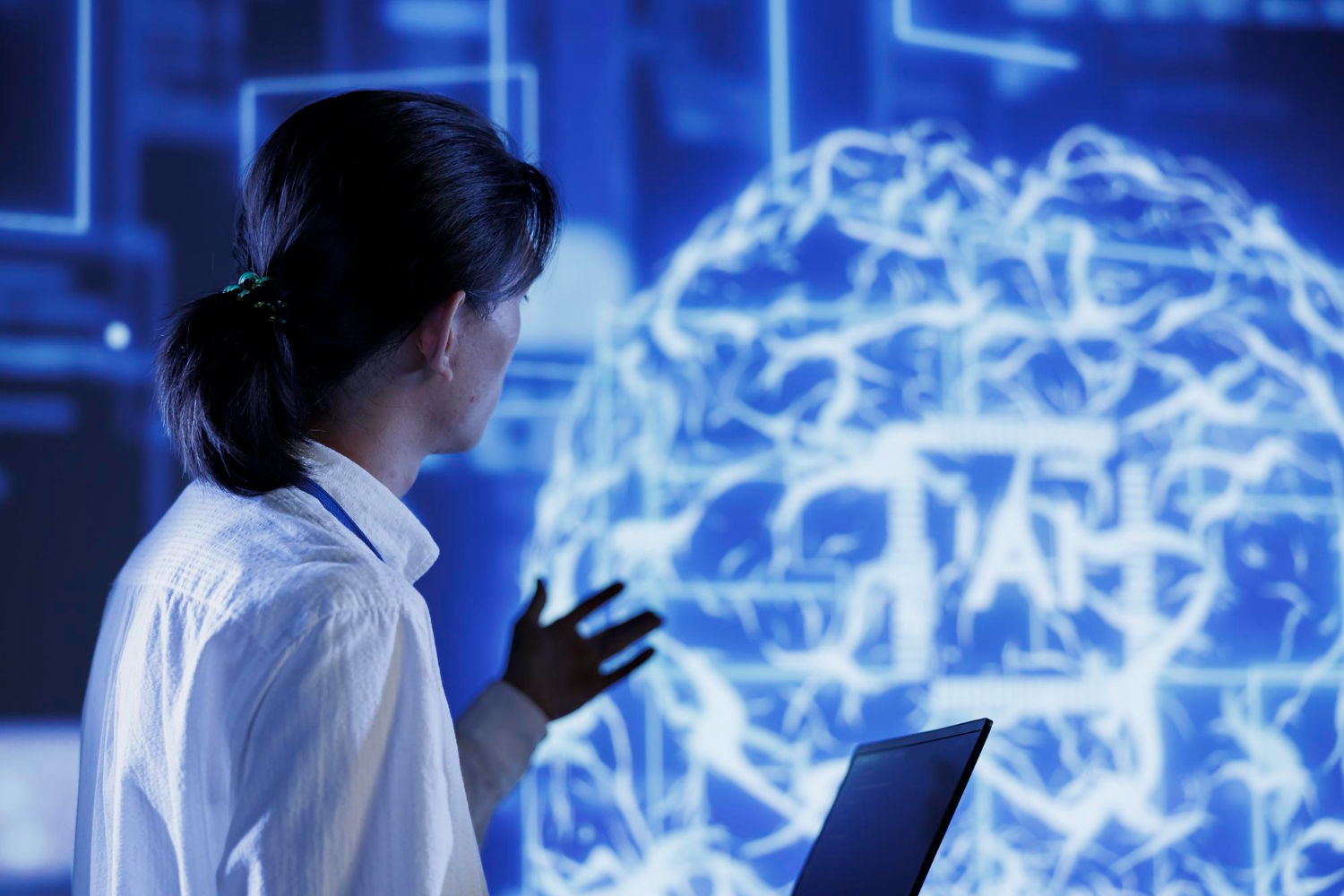The Future of Digital and Physical Interaction
Understanding AI and Extended Reality
Artificial intelligence (AI) and extended reality (XR) are reshaping technology. AI enables machines to mimic human intelligence, while XR blends the physical world with computer-generated elements. This includes virtual reality (VR), augmented reality (AR), and mixed reality.
The Role of AI in XR
AI improves XR experiences in real time. Machine learning enhances interactions by adapting to user behaviour. Natural language processing (NLP) enables voice commands, making virtual environments more interactive. AI-driven computer vision allows XR systems to understand surroundings and place digital objects accurately.
Real-World Applications
AI and XR impact many industries. Video games use AI for smarter non-player characters (NPCs) and adaptive difficulty. AI-driven XR also improves training simulations in healthcare, aviation, and defence.
Businesses use XR for product design and virtual meetings. Social media platforms integrate AI and XR for filters and interactive experiences.
Advancements in Computing Power
Stronger computing power supports AI-driven XR. Devices like the Oculus Rift provide realistic virtual environments. Cloud computing enables real-time XR processing without high-end hardware. AI optimises performance, ensuring smooth experiences on different devices.
AI-Driven Personalisation in XR
AI enhances XR by adapting experiences to users. Machine learning analyses user behaviour and adjusts environments in real time. In video games, AI creates dynamic difficulty levels, ensuring challenges match skill levels. In retail, XR-powered AI customises virtual shopping experiences based on preferences.
AI also improves accessibility. It can translate languages in AR applications, making experiences more inclusive. Natural language processing (NLP) allows users to interact with XR systems through voice commands. This makes virtual environments easier to navigate for people with disabilities.
AI and XR in Healthcare
Healthcare benefits from AI-driven XR solutions. AI enhances medical training by creating realistic simulations. Students and professionals can practice surgeries in VR before performing them in the real world. AI ensures accurate anatomy models, helping trainees improve their skills.
AI also assists in diagnostics. XR-powered AI tools analyse medical scans, highlighting abnormalities in real time. Augmented reality (AR) overlays patient data onto physical spaces, helping doctors during procedures. AI enhances rehabilitation by personalising XR therapy sessions, adapting exercises based on patient progress.
The Role of AI in Industrial Training
AI and XR provide safer training environments for high-risk jobs. In aviation, pilots use AI-powered VR simulations to practice emergency scenarios. Machine learning adjusts conditions based on the trainee’s reactions, creating lifelike experiences.
Manufacturing industries use AR overlays to guide workers. AI recognises components and provides step-by-step assembly instructions. This reduces errors and improves efficiency. AI also assists in predictive maintenance, using XR to highlight potential equipment failures before they happen.
AI-Powered Social Media and XR
Social media integrates AI and XR to create interactive experiences. AI-generated filters enhance photos and videos in real time. AR effects respond to facial movements, making interactions more engaging. AI also improves virtual influencers, allowing them to interact with followers in realistic ways.
Live streaming benefits from AI-powered XR enhancements. AI tracks movements and adjusts digital environments instantly. Virtual events become more immersive, allowing attendees to interact with AI-driven avatars. AI also moderates content, detecting inappropriate behaviour in virtual spaces.
Read more: How Artificial Intelligence Transforms Social Media Today
AI and XR in Education
Education is evolving with AI and XR. AI tailors learning experiences to individual students, adapting lessons based on progress. Virtual classrooms powered by XR make remote learning more engaging. Students can explore historical sites or conduct science experiments in virtual environments.
AI-driven chatbots assist with tutoring. They provide instant feedback and answer questions in real time. XR allows for hands-on learning without physical limitations. AI ensures that virtual learning environments remain interactive and effective.
Read more: AI Smartening the Education Industry
AI and XR in Entertainment
AI transforms entertainment through XR innovations. In filmmaking, AI assists in virtual production, generating realistic backgrounds in real time. AI-powered cameras track actors’ movements, ensuring seamless integration of digital elements.
Concerts and live events use XR to enhance audience engagement. AI analyses crowd reactions, adjusting visuals and effects accordingly. Sports broadcasts benefit from AI-driven AR overlays, providing real-time statistics and analysis. AI ensures that XR entertainment remains immersive and dynamic.
Read more: Level Up Your Gaming Experience with AI and AR/VR
AI and XR in Smart Cities
Cities are integrating AI and XR to improve urban planning. AI analyses data from sensors and simulates changes in virtual city models. Urban planners use XR to visualise traffic patterns, pedestrian flow, and infrastructure development.
AI-driven AR applications assist with navigation. AR overlays provide real-time directions, highlighting routes and points of interest. AI also improves public safety by analysing surveillance footage and predicting potential incidents. XR enhances city services, making them more efficient and accessible.
Read more: The Future of Cities Lies in AI and Smart Urban Design
Challenges and Ethical Considerations
Despite advancements, AI and XR present challenges. Privacy concerns arise as AI collects user data for personalisation. Companies must ensure data security and transparent policies. Ethical AI use in XR must prevent bias and misinformation.
Computing power remains a limitation. High-quality AI-driven XR experiences require significant processing capabilities. Cloud computing helps, but latency issues can affect real-time interactions. Continued development in AI efficiency will address these concerns.
The Road Ahead
AI and XR will continue reshaping industries. Advances in machine learning will enhance realism and interactivity. More businesses will adopt AI-driven XR for training, marketing, and customer engagement.
AI will make XR applications smarter, responding to users in more natural ways. XR will bridge the gap between digital and physical worlds, offering seamless interactions. These technologies will define the future of human-computer interaction.
The Future of AI and XR
AI and XR will continue evolving. Better AI models will create more realistic virtual environments. XR will integrate further into daily life, from entertainment to education. These technologies will change how people interact with digital content.
How TechnoLynx Can Help
TechnoLynx specialises in AI-driven XR solutions. Our expertise in machine learning and real-time computing ensures high-quality applications. Whether you need advanced XR training systems or AI-powered interactive experiences, we deliver tailored solutions. Contact us to bring AI and XR to your business.
Continue reading: The Future of XR Game Development
Image credits: Freepik













